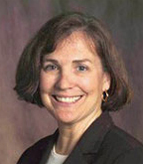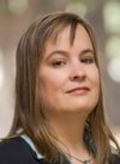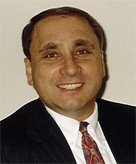|
SESUG is pleased to offer 6 pre-conference and 2 post-conference extra-fee workshops on Sunday, October 25th and Tuesday, October 27th. The half-day workshops are $125 if you register before midnight on September 24th and increase to $150 after that time. The workshop tuition includes a copy of the workshop materials and refreshments. If you need to arrive on Saturday to attend a morning workshop on Sunday, lodging at the SESUG conference hotel rate is available on Saturday.
Sunday, October 25, 2009
Sunday Morning, 8:00 am - 12:00 pm
 Advanced Reporting and Analysis Techniques: It’s Not Just About The PROCs! Part I
Advanced Reporting and Analysis Techniques: It’s Not Just About The PROCs! Part I
Instructor: Art Carpenter
WW-005 - East Hall, Level 3, Room D
No matter how experienced we are, no matter how well we know a procedure or a technique, there is still more that we do not yet know.
There are literally hundreds of techniques used on a daily basis by the users of SAS® software as they perform analyses and generate reports. Although often obscure, most of these techniques are relatively easy to learn and generally do not require specialized training before they can be implemented. Left to ourselves it is often very difficult to ‘discover’ the intricacies of these techniques and then to sift through them for the nuggets that have immediate value.
This course presents a series of those nuggets. It covers a broad range of SAS topics that have proven to be useful to the intermediate and advanced SAS programmer who is involved with the analysis and reporting of clinical data. The intended audience is expected to have a firm grounding in Base SAS. For most of the covered topics, the course will introduce useful techniques and options, but will not ‘teach the procedure’.
Presented as two independent half day seminars, the course includes options and techniques associated with:
Part I
- New, powerful, and little used options in MEANS/SUMMARY
- Reporting procedures including TABULATE and REPORT
- Understanding more about the REPORT compute block
- In the DATA step (functions, options, statements)
- Working with data
- Taking advantage of formats
Pre-Requisite: Well grounded intermediate level knowledge.
Intended Audience: This is a fast paced eclectic topic workshop. Attendees should have a strong intermediate level understanding of the DATA and PROC steps, as well as, the general operation of SAS.
Course Materials: Course notes.
Art Carpenter’s publications list includes four books, and numerous papers and posters presented at SUGI, SAS Global Forum, and other user group conferences. His latest book is a guide to PROC REPORT. Art has been using SAS® since 1976, served in various leadership positions in local, regional, national, and international user groups. He is a SAS Certified Advanced ProfessionalTM and through California Occidental Consultants he teaches SAS courses and provides contract SAS programming support nationwide.
 Top
Top
Sunday Morning, 8:00 am - 12:00 pm
 Statistics for Non-statisticians using SAS®
Statistics for Non-statisticians using SAS®
Instructor: Maribeth Johnson
WW-004 - East Hall, Level 3, Room E
In this workshop you will learn how to obtain descriptive statistics to summarize data. Examples will include proportions, means and medians, standard deviations and standard errors. You will also learn how to graphically display data for exploratory data analysis, data summarization and description. Fundamental concepts needed to understand statistical analysis will be covered. Inferential statistics will also be explored and you will learn the proper analysis to use for different data types and also how to perform those analyses and interpret the results. Topics will include t-tests, chi-square tests, correlation, regression, and ANOVA. ODS statistical graphics examples will be used to aid interpretation and understanding of analysis results. You will be able to perform basic statistical analyses using SAS after attending this workshop but you will also know when you should consult a statistician for analysis of more complex models.
Pre-requisite: Knowledge of getting data into SAS and basic data step manipulations.
Intended Audience: Professionals and students who need a basic understanding of the fundamentals of statistical analysis.
Course Materials: Copy of slides.
Maribeth Johnson is an Assistant Professor in the Department of Biostatistics at the Medical College of Georgia. She is the current President of SESUG and has been using SAS since starting graduate school the first time in 1980.
 Top
Top
Sunday Morning, 8:00 am - 12:00 pm
 ODS: The Basics and Beyond
ODS: The Basics and Beyond
Instructor: Lauren Haworth
WW-008 - East Hall, Level 3, Room F
Beginning with basic syntax and progressing to more complex techniques and custom styles, you will learn to take basic SAS output and transform it into an HTML page, a word-processor-friendly RTF file, or printer-friendly PDF output. For this workshop, the primary focus will be on RTF and PDF, though most of the examples will work for HTML as well
In addition, you'll learn how to generate a Table of Contents page for RTF and PDF files, generate bookmarks for PDF files and generate custom page numbering for those destinations. You will learn the basic concepts of changing style templates and using tagset templates to generate custom markup language tags and output. Other new features of ODS are discussed, such as the ODS Graphics Framework and the new statistical graphics procedures.
Pre-Requisite: Basic knowledge of SAS. Some topics require knowledge of basic reporting and graphics procedures, others may reference more advanced techniques.
Intended Audience: Beginning to intermediate ODS users.
Course Materials: Copy of slides plus selected pages from book.
Lauren Haworth is an Associate Director of Statistical Programming at Genentech, Inc., in South San Francisco. She has been using SAS since 1988, and specializes in analysis and reporting for clinical trials. Lauren is the author of two books in the SAS Books by Users series: "PROC TABULATE by Example" and "Output Delivery System: The Basics and Beyond” (release date: Summer 2009).
 Top
Top
Sunday Afternoon, 1:00 pm - 5:00 pm
 Advanced Reporting and Analysis Techniques: It’s Not Just About The PROCs! Part II
Advanced Reporting and Analysis Techniques: It’s Not Just About The PROCs! Part II
Instructor: Art Carpenter
WW-006 - East Hall, Level 3, Room D
No matter how experienced we are, no matter how well we know a procedure or a technique, there is still more that we do not yet know.
There are literally hundreds of techniques used on a daily basis by the users of SAS® software as they perform analyses and generate reports. Although often obscure, most of these techniques are relatively easy to learn and generally do not require specialized training before they can be implemented. Left to ourselves it is often very difficult to ‘discover’ the intricacies of these techniques and then to sift through them for the nuggets that have immediate value.
This course presents a series of those nuggets. It covers a broad range of SAS topics that have proven to be useful to the intermediate and advanced SAS programmer who is involved with the analysis and reporting of clinical data. The intended audience is expected to have a firm grounding in Base SAS. For most of the covered topics, the course will introduce useful techniques and options, but will not ‘teach the procedure’.
Presented as two independent half day seminars, the course includes options and techniques associated with:
Part II
- Interfacing with the Macro Language
- Output Delivery System, ODS, extras
- Operating System Interfaces and how you can take advantage of them
- Table look-up techniques
- Importing and exporting data
Pre-requisite: Well grounded intermediate level knowledge.
Intended Audience: This is a fast paced eclectic topic workshop. Attendees should have a strong intermediate level understanding of the DATA and PROC steps, as well as, the general operation of SAS.
Course Materials: Course notes.
Art Carpenter’s publications list includes four books, and numerous papers and posters presented at SUGI, SAS Global Forum, and other user group conferences. His latest book is a guide to PROC REPORT. Art has been using SAS® since 1976, served in various leadership positions in local, regional, national, and international user groups. He is a SAS Certified Advanced ProfessionalTM and through California Occidental Consultants he teaches SAS courses and provides contract SAS programming support nationwide.
 Top
Top
Sunday Afternoon, 1:00 pm - 5:00 pm
 Building Reusable Macro Tools with the SAS® Macro Language
Building Reusable Macro Tools with the SAS® Macro Language
Instructor: Kirk Lafler
WW-001 - East Hall, Level 3, Room E
The SAS® Macro Language is a powerful feature for extending the capabilities of the SAS System. This course presents a collection of techniques for constructing reusable and effective macros tools. Attendees learn how to build functional macros that process statements containing SAS code; design reusable macro techniques; create macros containing keyword and positional parameters; utilize defensive programming techniques; build a library of macro utilities; interface the macro language with the SQL procedure; and develop efficient and portable macro language code.
Pre-Requisite: SAS Basic Macro course or 1-year SAS software experience.
Intended Audience: All SAS users.
Course Materials: Course Notes.
Kirk Paul Lafler is consultant and founder of Software Intelligence Corporation and has been programming in SAS since 1979. As the author of four books including PROC SQL: Beyond the Basics Using SAS (SAS Institute. 2004), Kirk has written more than three hundred peer-reviewed papers and articles and has also been an Invited speaker at more than three hundred SAS International, regional, local, and special-interest user group conferences and meetings throughout North America.
 Top
Top
Sunday Afternoon, 1:00 pm - 5:00 pm
 Adding SQL to Your SAS® Programming Repertoire
Adding SQL to Your SAS® Programming Repertoire
Instructor: Warren Repole
WW-002 - East Hall, Level 3, Room F
Although the DATA step and Base SAS procedures can accomplish many tasks, there is a role for Structured Query Language (SQL) in many SAS applications. Some SAS users are reluctant to try SQL because they perceive it as "a different programming language." After they recognize the numerous parallels between SQL approaches and the corresponding traditional SAS techniques, it becomes apparent that SQL is just another variation of SAS code, much like the SAS macro language. In fact, PROC SQL is part of Base SAS itself.
This seminar shows parallels between SQL and traditional SAS solutions, and illustrates the benefits of implementing SQL-based solutions in place of, or in addition to, step-based SAS code. Well-crafted SQL alternatives can streamline SAS programs, expedite the development and debugging process, and minimize future code maintenance. As a bonus, certain applications can run more efficiently when written using SQL.
Topics are divided into four main categories: (1) Displaying and Computing Data; (2) Combining Data; (3) Modifying Data; and (4) Macro Applications
Pre-requisite: Minimum knowledge includes DATA step programming and common Base SAS procedures such as PRINT, SORT, and MEANS.
Intended Audience: Many short code examples suitable for any level of SAS programmer with little SQL experience.
Course Materials: A handout will show the PowerPoint slides used during the presentation, additional notes associated with the slides, and sample SAS code and output.
Warren Repole began using SAS at the University of Florida in 1979 and has taught classes for SAS Institute since 1992. Warren's specialties include DATA step and macro programming, SAS/GRAPH, and SAS/IntrNet. He currently holds the SAS Certified Advanced Programmer for SAS®9 credential. Warren also uses SAS at home -- recreational SAS, so to speak -- to support such personal projects as reunion activities for his high school class.
 Top
Top
Tuesday, October 27, 2009
Tuesday Afternoon, 1:00 pm - 5:00 pm
 Getting the Most from SAS® Formats
Getting the Most from SAS® Formats
Instructor: Art Carpenter
WW-007 - East Hall, Level 3, Room D
This half-day seminar shows you how to get the most from Formats in the SAS System. Starting at the basics, we will cover the essential role that Formats play when working with data stored in SAS data sets. We will then move to how INFORMATs are used when building SAS data sets from other data sources, how to work with SAS-supplied date and time formats, and how to create permanent SAS format libraries. Other topics to be discussed include MULTILABEL formats, the new ANYDATE INFORMAT in SAS 9 Software, using Formats when performing table look-ups, concatenated Format Libraries, creating Formats from Input Control Data Sets, and how to effectively use PICTURE Formats. This seminar is appropriate for all SAS Software users who want to learn more about the power and flexibility of SAS formats, and what they can do for you.
After completing this course the student will be able to:
- Use formats and informats to read data from flat files.
- Assign formats and informats to the DATA descriptor record.
- Use SAS supplied format libraries.
- Modify procedure output displays through the use of formats.
- Change the way procedures calculate and group information.
- Use formats to perform traffic lighting tasks.
- Specify and build user defined formats.
- Utilize and create PICTURE style formats.
- Make use of formats and informats new to SAS 9.
- Access and control format libraries and catalogs.
- Build and make use of MULTILABEL formats.
Pre-Requisite: Basic SAS knowledge (DATA and PROC steps).
Intended Audience: Accomplished beginner or early intermediate.
Course Materials: Course Notes.
Art Carpenter’s publications list includes four books, and numerous papers and posters presented at SUGI, SAS Global Forum, and other user group conferences. His latest book is a guide to PROC REPORT. Art has been using SAS® since 1976, served in various leadership positions in local, regional, national, and international user groups. He is a SAS Certified Advanced ProfessionalTM and through California Occidental Consultants he teaches SAS courses and provides contract SAS programming support nationwide.
 Top
Top
Tuesday Afternoon, 1:00 pm - 5:00 pm
 SAS® Performance Tuning Techniques
SAS® Performance Tuning Techniques
Instructor: Kirk Lafler
WW-003 - East Hall, Level 3, Room E
As SAS® Software becomes increasingly more popular among programmers and end-users; guidelines for its efficient use are critical. This workshop presents numerous guidelines, tips and techniques to control and manage program execution, I/O, memory, disk space, program maintenance, as well as the access and analysis of Dictionary table information for an understanding of performance tuning strategies. A collection of proven techniques and code examples are presented to illustrate practical methods for gaining efficiency while using SAS Software.
Pre-requisite: SAS Basics course or 6-months SAS software experience.
Intended Audience: All SAS users.
Course Materials: Course Notes.
Kirk Paul Lafler is consultant and founder of Software Intelligence Corporation and has been programming in SAS since 1979. As the author of four books including PROC SQL: Beyond the Basics Using SAS (SAS Institute. 2004), Kirk has written more than three hundred peer-reviewed papers and articles and has also been an Invited speaker at more than three hundred SAS International, regional, local, and special-interest user group conferences and meetings throughout North America.
 Top
Top
|